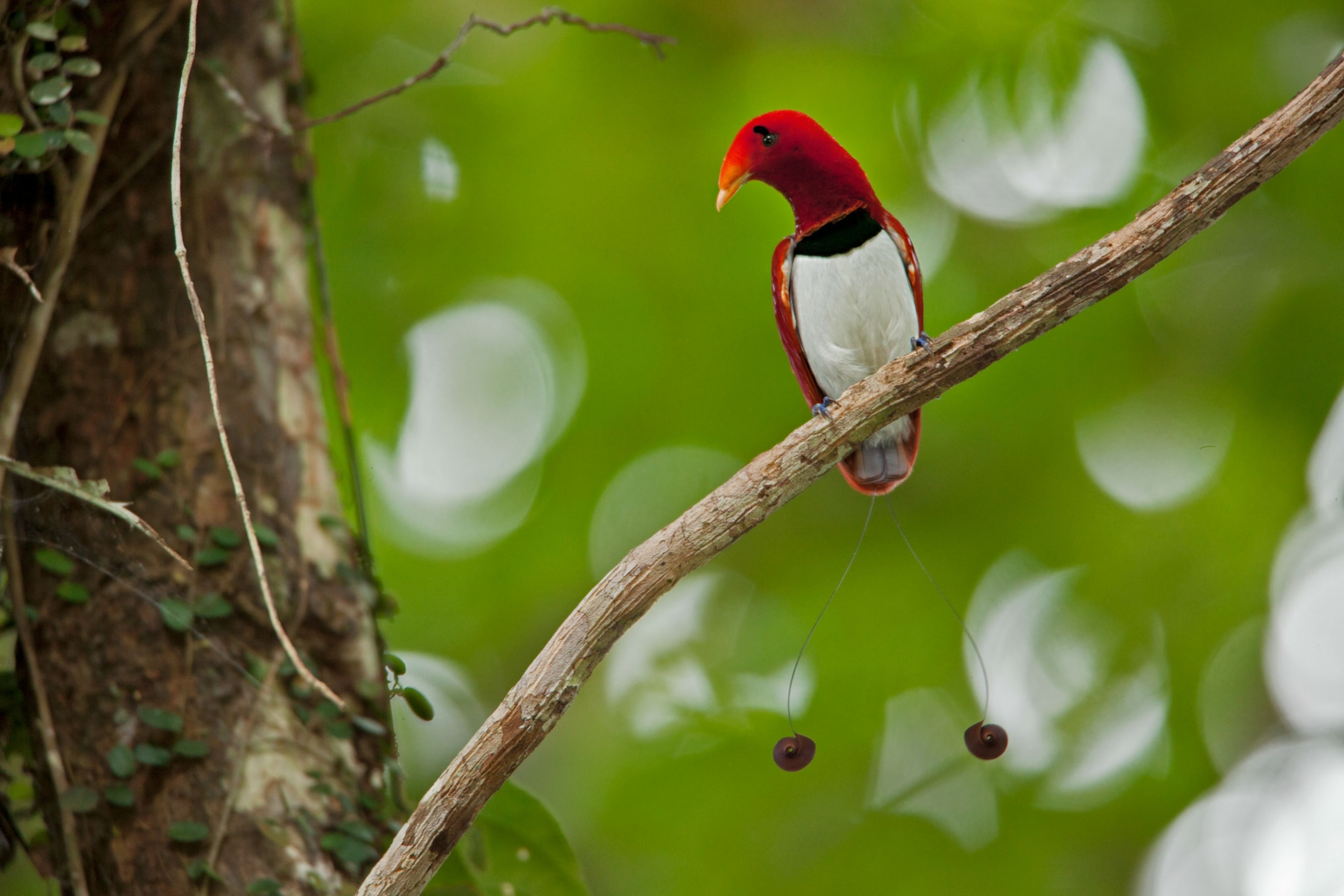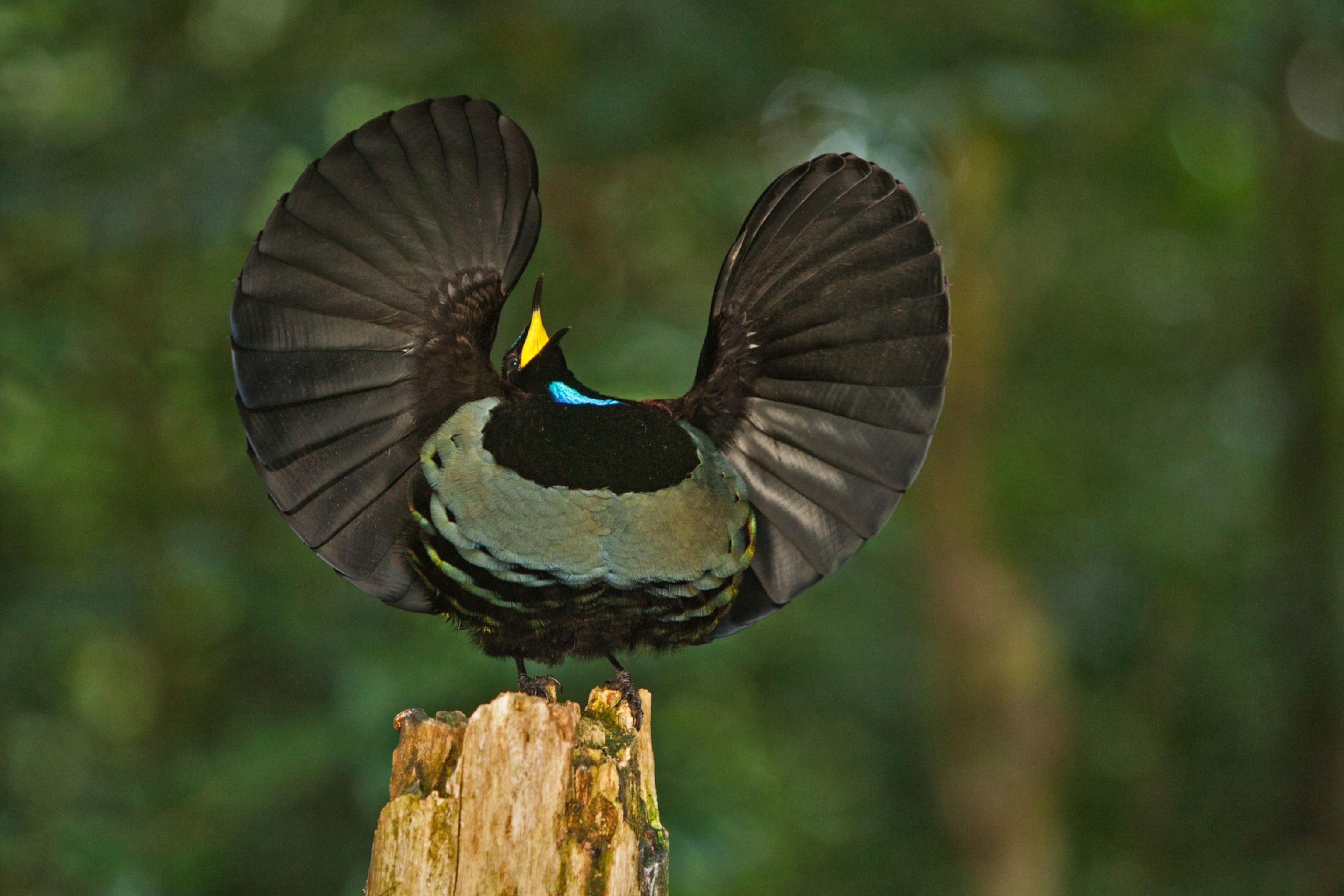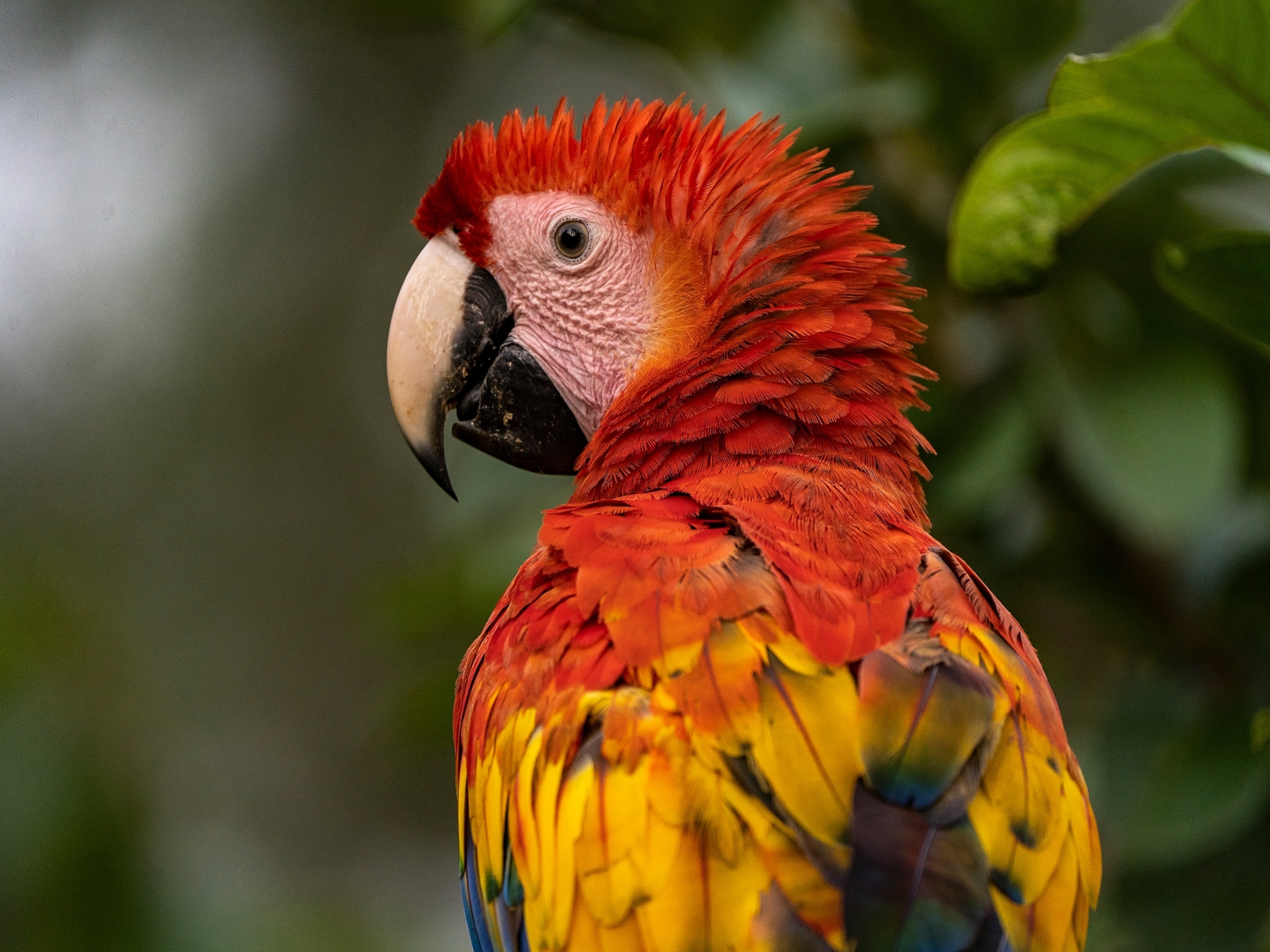





How an Obsession With Rare Bird Feathers Turned Criminal
In a bizarre heist, a young musician broke into the British Natural History Museum at Tring to steal exotic birds.
“This is a very unusual crime,” Detective Inspector Fraser Wylie of the Hertfordshire Constabulary, in southern England, said at the time.
It happened one night in November 2009, when Edwin Rist, a 20-year-old American, broke into the British Natural History Museum at Tring, one of the world’s greatest repositories of exotic birds. He stuffed a suitcase with nearly 300 of the rarest, most dazzling species—the magnificent riflebird, the resplendent quetzal, the superb bird of paradise, among others—and vanished.
Rist, a gifted flautist, was in London attending the Royal Academy of Music. He was also a champion salmon flytier. Avocation had become obsession, locking him in a kind of fly-tying arms race with other practitioners of the art. The more exotic and spectacular the feathers, the greater the kudos, and the more money to be made from selling them.
“Impossibly strange” was Kirk Johnson’s reaction when he heard about the crime while fly-fishing in northern New Mexico. “I found it so bizarre as to be captivating,” he says. “It struck me as impossible to hear about a museum heist of dead birds carried out by a student flautist to meet the insatiable demand of salmon flytiers and not want to learn more.”
Finding out more led Johnson on a years-long quest detailed in his book The Feather Thief, published today by Viking and excerpted here by Wildlife Watch.
Eventually the law caught up with Rist. He went to court, but the judge gave him no more than a slap on the wrist. “He’s now living in Germany, performing as a flautist under a different name,” according to Johnson.
Today feathers from endangered birds such as the quetzal are illegally bought and sold online, Johnson says. He adds, “I know of several other museums that suffered thefts of specimens by another flytier whose identity has never been revealed and who never faced justice.” And recently, while Johnson was touring the Los Angeles Natural History Museum, he says, “the resident ornithologist pointed out the indentations where a thief pried open an exhibit to steal a quetzal and other brightly colored birds.”
As Johnson says, “There are more stories to be told.”
The following excerpt from The Feather Thief, abridged and edited for style, describes the Tring museum heist.
EDWIN RIST STRODE through the main entrance of the Ornithology Building at the British Natural History Museum at Tring, some 40 miles north of London. The building, which looms in a corner of the museum complex, is a four‐story brutalist fortress of concrete housing one of the world’s largest ornithological collections. Edwin signed his name in the visitors’ logbook while the guard examined his ID and phoned the staff’s office to announce his arrival. It was November 5, 2008.

The curators believed he was there to take photographs on behalf of a graduate student researching birds of paradise. They didn’t realize that the 20-year-old, enrolled as a flautist at the Royal Academy of Music, was also a master salmon flytier, after a meteoric ascent within the cultish community. Scattered across the globe, practitioners of the art congregated at ClassicFlyTying.com, an obscure online forum where they traded techniques, bought and sold feathers, and held annual competitions for best tier.
A staffer escorted him into the bird vault, where more than 750,000 skins are carefully stored in 1,500 white steel cabinets, occupying tens of thousands of square feet. The air was thick with the smell of mothballs, used to protect specimens against insect damage.
The staffer deposited Edwin in front of the cabinets marked PARADISAEIDAE, birds of paradise, and wandered off.
Edwin opened the cabinet doors. Inside were rows of drawers, some two dozen in each cabinet. He slowly pulled one out to reveal a dozen adult male magnificent riflebirds lying on their backs. He removed his trembling hand from the drawer pull. He’d never seen a full skin before, much less a dozen of them. The birds, about a foot in length, had a robe of deep black feathers, accented by a breastplate of metallic bluish‐green feathers that turned purple in the right light. Their eyes had been stuffed with cotton, and labels hung from their legs recording crucial scientific data: altitude, latitude, longitude, date of capture, and name of the collector. Several bore the faded handwriting of Alfred Russel Wallace, the eminent British naturalist who was a contemporary of Charles Darwin.
The drawer below held another dozen, and the drawer below that, a dozen more, all in perfect condition. In 2008, 10 riflebird breast feathers had sold for $50 on the forum; with more than 500 feathers per breast, a single skin might fetch $2,500. Tens of thousands of dollars were resting in the drawers of just the first cabinet he’d opened, like lightweight, gleaming bricks of gold. And rows of cabinets stretched down the hallways for what seemed like miles.
Edwin’s interest had started out innocently enough, when as a 10-year-old he stumbled across an Orvis instructional video on trout flies, which require materials that are drab, common, and cheap: elk hair, rabbit fur, wool, and chicken feathers. It wasn’t until a couple of years later, at the North East Fly Tying Championship, in Wilmington, Massachusetts, that the young boy laid eyes on the glimmering thing that would take his hobby and distort it into an obsession: a display of 60 Victorian salmon flies. He had never seen anything like these spectral bursts of iridescent turquoise, emerald, crimson, and gold. Compared to the ugly brown and black flies he was used to tying, they seemed to belong to some other planet.

Even though Edwin’s technical skills quickly advanced to the point that the editor of Fly Tyer magazine hailed him in 2005 as the “future of fly-tying,” he was constantly thwarted by his inability to find enough feathers. Some recipes were so extravagant that they required $2,000 worth of feathers, often from species that are now protected. Whenever prized birds appeared on eBay, they were always snapped up by wealthy men.
When one of his mentors, a mysterious Québécois tier by the name of Luc Couturier, heard that Edwin was headed to London to study, he sent his protégé an email, telling him about a magical place. Attached were photos of the bird-filled drawers of the Natural History Museum at Tring.
Once he pulled himself together, Edwin carefully removed one of the birds from the drawer, brought it over to a research table, and took a picture. After he returned it, he surreptitiously snapped a photograph of the cabinet.
He moved to the cabinet that held the king bird of paradise. In 1857, after traveling thousands of miles across deserts and oceans and surviving relentless attacks of malaria, Wallace became the first naturalist to encounter the species in the forests of the Aru Islands, off the southern coast of New Guinea. Overcome by the sight of the crimson-red bird, which shone in certain lights “with a metallic or glassy lustre,” Wallace worried about what would happen if “civilized man” ever discovered it. “We may be sure,” Wallace wrote, that he will “cause the disappearance, and finally the extinction, of these very beings whose wonderful structure and beauty he alone is fitted to appreciate. This consideration must surely tell us that all living things were not made for man.”
Ten king birds of paradise were now within Edwin’s reach. He took a photograph of his favorite specimen, snapped another of the corridor of cabinets, and moved on to the museum’s collection of the South American Cotingidae family of birds, which included the species most coveted by flytiers: the red-ruffed fruitcrow, also known as Indian crow, and the cotinga.
The small cotinga’s turquoise body practically glowed in his hands. Most cotingas for sale were half destroyed, their feathers picked and plucked at by generations of tiers. A set of 10 feathers could fetch $50. Here were dozens of flawless, untouched specimens, each of which could be sold for at least a thousand dollars.
Each time he photographed a new species, he snapped a picture of its location. His camera’s memory chip slowly filled up with a visual map of the vault.
Edwin’s mind raced beyond the sheer monetary value of the museum’s birds to the creative potential they represented. Ever since he tied his first Victorian fly, his pursuit of perfection had been defined by a longing for the skins he could never afford.
To now wade through a seemingly endless supply of birds unstoppered a river of possibilities in Edwin’s imagination. If he owned these birds, he would have an unrivaled stash of feathers for the rest of his life. In a community defined by its longing for the unobtainable, he would be king, and his flies would be unmatched. Even better, he could feature them in the book on fly tying that he hoped to write, cementing his place in history.
EDWIN WOKE UP READY AND CONFIDENT the morning of June 23, 2009. He performed at the academy’s London Soundscapes, a daylong tribute to composers who had left their mark on the city during the past few centuries. In his concert hall locker he had stashed an empty suitcase, a miniature flashlight, a wire cutter, latex gloves, and a glass cutter. After the performance he swapped his flute for the suitcase, made his way to Euston Station, and boarded an evening train to Tring.
Preparations had begun in earnest on June 11, when he’d ordered a diamond‐blade glass cutter through his eBay account: Fluteplayer1988. He’d also ordered a box of 50 mothballs.
He had pored over a map of the museum. He went online and studied maps of the town of Tring, its main streets, side streets, and alleyways. The train station was east of the town center, separated by a few miles of dimly lit country road. A pathway—Public Footpath 37—would deposit him directly behind the Ornithology Building. There was a wall, but he could easily scale it. There was barbed wire, but he could easily snip it. There was a gap of three feet between the wall and the window on the second floor, but he could reach it.

The Midland train is painted parrot green and toucan yellow, its ride quieted by a coffee‐colored carpet. Just before the Kings Langley stop, halfway to Tring, the Grand Union Canal appears and runs between the tracks and the A41 highway the rest of the way. A woman’s voice murmured the name of each stop, “Wembley Central, Harrow & Wealdstone, Bushey, Watford Junction ...”
Edwin had nine stops and 35 minutes to change his mind.
His well‐rehearsed plan quickly went off script. After he lost the glass cutter, it took several nerve‐racking minutes to bash enough of the window away to make room for his suitcase, but he was too charged with adrenaline to worry about cuts as he wriggled past the window frame’s jagged edges into the museum.
His flashlight cast a faint dome of light as he hurried down the hallway, scanning the cabinet labels for his desired species.
Forty‐seven Indian crows, each weighing about as much as a deck of cards, fitted neatly in the suitcase. After relieving the Tring’s drawers of 98 cotingas, he carefully shut the cabinets to avoid arousing the suspicion of the museum staff and made his way to the birds of the Malay Archipelago. He pulled out a tray labeled Sericulus aureus, containing the nine‐inch‐long flame bowerbird of New Guinea, famous for a hypnotic courtship dance in which it raises its wing like a matador while dilating and contracting its pupils. He wedged 17 tangerine and golden skins into his suitcase.
At last he made his way to the birds of paradise. He maneuvered 24 magnificent riflebirds into his luggage, now brimming with several continents’ and centuries’ worth of specimens. Still, he managed to find room for 12 superb birds of paradise, a species renowned for its bouncing courtship dance in which it shows off a stunning breastplate of glowing aquamarine feathers.
Upon arriving at the cabinet containing Alfred Russel Wallace’s beloved king birds of paradise, he gingerly laid 37 of the birds, several of which bore Wallace’s handwritten tags, into his suitcase.
Edwin realized he had lost himself in the plunder: He had no idea how many birds he’d taken or how long he’d been inside, but he knew the guard’s next round must be coming up soon. Whether he managed to get back out the window and into the anonymity of the street before their paths collided would depend on how efficiently he moved. He walked briskly through the corridors, wheeling his full suitcase behind him. By the time the guard finally appeared, Edwin was gone, having climbed out the way he came in.
As he made his way up the footpath, a tremendous wave of fatigue overcame him when his adrenaline subsided. He reverted to a kind of limbic motor movement, instinctively shuffling one foot in front of the other, breathing heavily as he emerged onto High Street. As he headed east, the storefronts yielded to houses, the houses to farms, and soon he was alone in the blackness of the ancient trees that formed a canopy over the narrow road.
By his estimation he had been inside the museum for nearly three hours, causing him to miss the last train back to London that evening. The next option wasn’t until 3:54 in the morning. As he sat on the platform, with a million dollars’ worth of birds in his suitcase, he began to worry—for the first time in months of planning—about getting caught.
At long last the Midland train slipped into Tring, its headlights scattering the shadows on the platform. Edwin clutched his suitcase and waited impatiently for the doors to open, desperate to get far away from the museum and back to the city, where he could blend into the crowd of Londoners and luggage‐toting tourists.
From The Feather Thief, by Kirk Wallace Johnson, to be published on April 23, 2018, by Viking, an imprint of Penguin Publishing Group, a division of Penguin Random House, LLC. Copyright © 2018 by MJ + KJ, Inc.
Follow Kirk Wallace Johnson on Twitter at @kirkwjohnson.
Related Topics
You May Also Like
Go Further
Animals
- Orangutan seen using plants to heal wound for first timeOrangutan seen using plants to heal wound for first time
- What La Palma's 'lava tubes' tell us about life on other planetsWhat La Palma's 'lava tubes' tell us about life on other planets
- This fungus turns cicadas into zombies who procreate—then dieThis fungus turns cicadas into zombies who procreate—then die
- How can we protect grizzlies from their biggest threat—trains?How can we protect grizzlies from their biggest threat—trains?
Environment
- What La Palma's 'lava tubes' tell us about life on other planetsWhat La Palma's 'lava tubes' tell us about life on other planets
- How fungi form ‘fairy rings’ and inspire superstitionsHow fungi form ‘fairy rings’ and inspire superstitions
- Your favorite foods may not taste the same in the future. Here's why.Your favorite foods may not taste the same in the future. Here's why.
- Are the Great Lakes the key to solving America’s emissions conundrum?Are the Great Lakes the key to solving America’s emissions conundrum?
- The world’s historic sites face climate change. Can Petra lead the way?The world’s historic sites face climate change. Can Petra lead the way?
History & Culture
- Meet the ruthless king who unified the Kingdom of Hawai'iMeet the ruthless king who unified the Kingdom of Hawai'i
- Hawaii's Lei Day is about so much more than flowersHawaii's Lei Day is about so much more than flowers
- When treasure hunters find artifacts, who gets to keep them?When treasure hunters find artifacts, who gets to keep them?
Science
- Why ovaries are so crucial to women’s health and longevityWhy ovaries are so crucial to women’s health and longevity
- Orangutan seen using plants to heal wound for first timeOrangutan seen using plants to heal wound for first time
Travel
- 5 of Uganda’s most magnificent national parks
- Paid Content
5 of Uganda’s most magnificent national parks - On this Croatian peninsula, traditions are securing locals' futuresOn this Croatian peninsula, traditions are securing locals' futures
- Are Italy's 'problem bears' a danger to travellers?Are Italy's 'problem bears' a danger to travellers?







